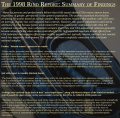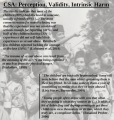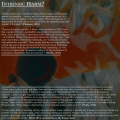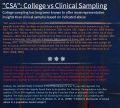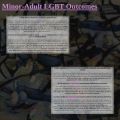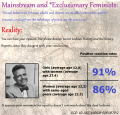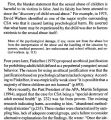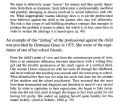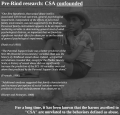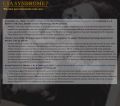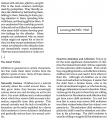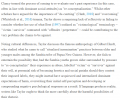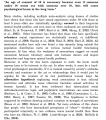One of our staff members is contributing considerably to a News Archiving service at Mu. Any well educated (Masters, PhD or above) users who wish to make comments on news sites, please contact Jim Burton directly rather than using this list, and we can work on maximising view count.
Research: Methodological flaws and syndrome construction: Difference between revisions
The Admins (talk | contribs) No edit summary |
No edit summary |
||
| Line 15: | Line 15: | ||
*'''Lahtinen, H., et al., (2018). "[https://pubmed.ncbi.nlm.nih.gov/29096161/ Children's disclosures of sexual abuse in a population-based sample]," ''Child abuse and Neglect'', Feb 2018; 76: 84-94.''' | *'''Lahtinen, H., et al., (2018). "[https://pubmed.ncbi.nlm.nih.gov/29096161/ Children's disclosures of sexual abuse in a population-based sample]," ''Child abuse and Neglect'', Feb 2018; 76: 84-94.''' | ||
*:"The present study aimed to explore the overall CSA disclosure rate and factors associated with disclosing to adults in a large population-based sample. A representative sample of 11,364 sixth and ninth graders participated in the Finnish Child Victim Survey concerning experiences of violence, including CSA. CSA was defined as having sexual experiences with a person at least five years older at the time of the experience. Within this sample, the CSA prevalence was 2.4%. Children reporting CSA experiences also answered questions regarding disclosure, the disclosure recipient, and potential reasons for not disclosing. The results indicate that most of the children (80%) had disclosed to someone, usually a friend (48%). However, only 26% had disclosed to adults, and even fewer had reported their experiences to authorities (12%). The most common reason for non-disclosing was that the experience was not considered serious enough for reporting (41%), and half of the children having CSA experiences did not self-label their experiences as sexual abuse. Relatively few children reported lacking the courage to disclose (14%)." | *:"The present study aimed to explore the overall CSA disclosure rate and factors associated with disclosing to adults in a large population-based sample. A representative sample of 11,364 sixth and ninth graders participated in the Finnish Child Victim Survey concerning experiences of violence, including CSA. CSA was defined as having sexual experiences with a person at least five years older at the time of the experience. Within this sample, the CSA prevalence was 2.4%. Children reporting CSA experiences also answered questions regarding disclosure, the disclosure recipient, and potential reasons for not disclosing. The results indicate that most of the children (80%) had disclosed to someone, usually a friend (48%). However, only 26% had disclosed to adults, and even fewer had reported their experiences to authorities (12%). The most common reason for non-disclosing was that the experience was not considered serious enough for reporting (41%), and half of the children having CSA experiences did not self-label their experiences as sexual abuse. Relatively few children reported lacking the courage to disclose (14%)." | ||
==Excerpt Graphic== | |||
This graphic may be useful if you wish to reproduce some of our sources without being character limited. | |||
<gallery> | |||
Template:EGLHarm|Caption1 | |||
</gallery> | |||
{{Template:EGLHarm}} | |||
[[Category:Official Encyclopedia]][[Category:Research into effects on Children]][[Category:Research: Victimology and other Pseudoscience]] | [[Category:Official Encyclopedia]][[Category:Research into effects on Children]][[Category:Research: Victimology and other Pseudoscience]] | ||
Revision as of 00:27, 11 November 2021
 | ||||||||||||
| Part of NewgonWiki's research project | ||||||||||||
|---|---|---|---|---|---|---|---|---|---|---|---|---|
|
| ||||||||||||
| ||||||||||||
|
| ||||||||||||
| Template: Research - This template |
Children involved in intergenerational sexual relationships do not show a set pattern of reactions. In addition to this, certain types of reactions have been correlated with social factors.
- Constantine, L.L., (1981). "The effects of early sexual experiences: A review and synthesis of research," in Constantine, L.L. & Martinson, F.M. (eds.), Children and Sex: New Findings, New Perspectives.
- MHAMIC: "The author concludes that there is no set of reactions that is a single inevitable outcome of adult-child sexual interaction. More negative outcomes are associated with violence or coercion, tense situations, sex-negative attitudes, sexual ignorance, and unsupportive or judgmental adult reactions. The amount of anxiety and guilt that the child experiences depends on two main characteristics of the interaction. These factors are of overwhelming importance in immediate and long-term effects."
- Finkelhor, David (1990). "Early and long-term effects of child sexual abuse: An update," Professional Psychology: Research and Practice, 21(5), pp. 325-330.
- "Another attempt to consider the impact of sexual abuse has been the formulation of a specific sexually-abused-child disorder (Corwin, 1988). This effort has evolved in response to the need many clinicians perceive to have a diagnostic category in which to place sexually abused children. However, this approach has not caught on because it has proved so difficult to define a set of symptoms that clearly delineates sexually abused children. As we have pointed out, some victims appear to be asymptomatic in the immediate wake of abuse. Perhaps more important, victims manifest such a large variety of symptoms that there is no single set of symptoms that can be considered characteristic. The sexualized behavior that many clinicians think is so much the hallmark of the child who has been sexually abused occurs in only 7% of all victims according to the evaluations of 369 children by Conte and Schuerman (1987). The attempts to define a single sexually abused child syndrome are unlikely to meet with future success and acceptance."
- Kendall-Tacket, K. A., Williams, L. M., & Finkelhor, D. (1993). "Impact of Sexual Abuse on Children: A Review and Synthesis of Recent Empirical Studies," Psychological Bulletin, 113(1), 164-180.
- "The findings suggest the absence of any specific syndrome in children who have been sexually abused and no single traumatizing process. [...] The range of symptoms, the lack of a single predominant symptom pattern, and the absence of symptoms in so many victims clearly suggest that diagnosis is complex. Because the effects of abuse can manifest themselves in too many ways, symptoms cannot be easily used, without other evidence, to confirm the presence of sexual abuse. Yet the absence of symptoms certainly cannot be used to rule out sexual abuse. There are too many sexually abused children who are apparently asymptomatic."
Tendency to disclose
- Lahtinen, H., et al., (2018). "Children's disclosures of sexual abuse in a population-based sample," Child abuse and Neglect, Feb 2018; 76: 84-94.
- "The present study aimed to explore the overall CSA disclosure rate and factors associated with disclosing to adults in a large population-based sample. A representative sample of 11,364 sixth and ninth graders participated in the Finnish Child Victim Survey concerning experiences of violence, including CSA. CSA was defined as having sexual experiences with a person at least five years older at the time of the experience. Within this sample, the CSA prevalence was 2.4%. Children reporting CSA experiences also answered questions regarding disclosure, the disclosure recipient, and potential reasons for not disclosing. The results indicate that most of the children (80%) had disclosed to someone, usually a friend (48%). However, only 26% had disclosed to adults, and even fewer had reported their experiences to authorities (12%). The most common reason for non-disclosing was that the experience was not considered serious enough for reporting (41%), and half of the children having CSA experiences did not self-label their experiences as sexual abuse. Relatively few children reported lacking the courage to disclose (14%)."
Excerpt Graphic
This graphic may be useful if you wish to reproduce some of our sources without being character limited.
-
Caption1
-
Basic Rind Paradox infographic
-
Summarized Rind findings
-
Rind and Tromovitch (2000) on Iatrogenic Harm
-
Research pointing to no intrinsic harm profiled in The Guardian
-
What victimologists say about youth perception + admissions of iatrogenic harm
-
Self-perception: Importance
-
Some reading on secondary harm and perception/situational variables
-
More secondary harms
-
Intrinsic vs secondary harm
-
Daly's 2021 repetition of Rind (1998), finds that self-perception is far more important that abuse status
-
Lahtinen Report: Most common reason for not reporting - event not serious enough
-
Bender. Sexologist's observations in 1969
-
College outcomes: Benefits of college samples
-
LGBT outcome/perception data (links to papers in this release)
-
Arreola 2009 - Psych outcomes for LGBT "CSA" identical to no sex
-
Simpler way of expressing Lesbian outcomes (ref to modern feminism)
-
Further distillation of Rind's Kinsey analysis
-
Finer analysis of Finnish Victimization Survey (Rind)
-
General reading on intrinsic harm
-
Oellerich on the self-fulfilling prophecy of iatrogenic harm
-
Oellerich comments further on iatrogenic harm
-
CSA harm was known to be confounded even before Rind
-
No "typical" CSA reaction or "syndrome"
-
Rind on methodological issues/limitations of victimology
-
The Lanning (1992) report - full of hysterical conjecture, nevertheless describes the "most common" forms of offender and victim in banal terms that are applicable to most relationships (in order to prepare investigators to pathologize banality)
-
Percy Foundation review of Chloe Taylor: "Foucault, Feminism, & Sex Crimes"
-
2022 debate response
-
Illinois state investigation finds a "pedophile" was his victims' "best friend"

